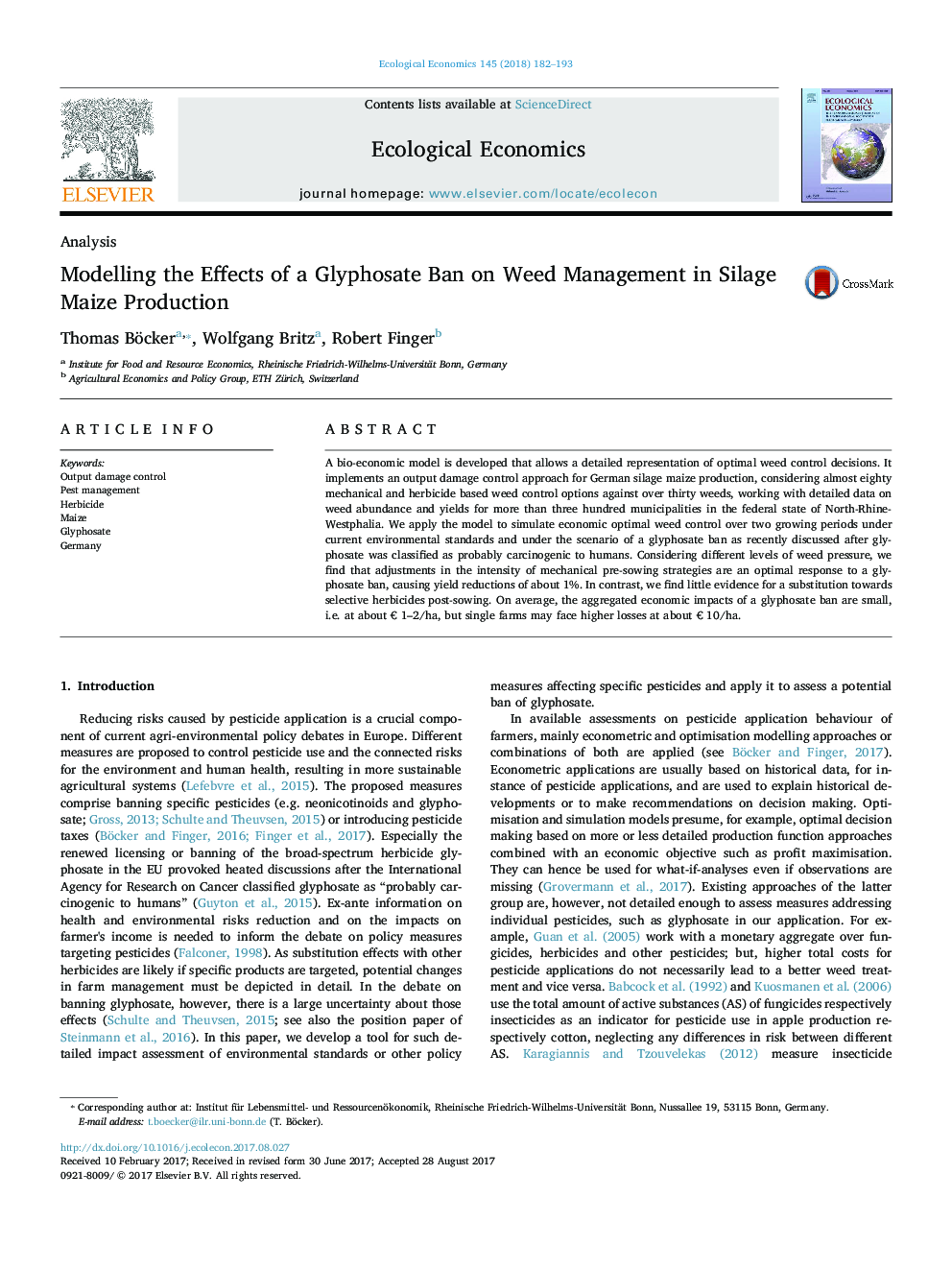| Article ID | Journal | Published Year | Pages | File Type |
|---|---|---|---|---|
| 5048604 | Ecological Economics | 2018 | 12 Pages |
â¢A damage control approach considers almost 80 weed management strategies in maize.â¢Data on 32 weeds and yields for 377 communes in North-Rhine-Westphalia are used.â¢Profits are maximised with glyphosate licensed and banned under different prices.â¢Limited income losses under a ban, but higher labour demand for mechanical control.â¢Reduced pre-sowing weed control causes some yield loss, and some cost increase.
A bio-economic model is developed that allows a detailed representation of optimal weed control decisions. It implements an output damage control approach for German silage maize production, considering almost eighty mechanical and herbicide based weed control options against over thirty weeds, working with detailed data on weed abundance and yields for more than three hundred municipalities in the federal state of North-Rhine-Westphalia. We apply the model to simulate economic optimal weed control over two growing periods under current environmental standards and under the scenario of a glyphosate ban as recently discussed after glyphosate was classified as probably carcinogenic to humans. Considering different levels of weed pressure, we find that adjustments in the intensity of mechanical pre-sowing strategies are an optimal response to a glyphosate ban, causing yield reductions of about 1%. In contrast, we find little evidence for a substitution towards selective herbicides post-sowing. On average, the aggregated economic impacts of a glyphosate ban are small, i.e. at about ⬠1-2/ha, but single farms may face higher losses at about ⬠10/ha.
